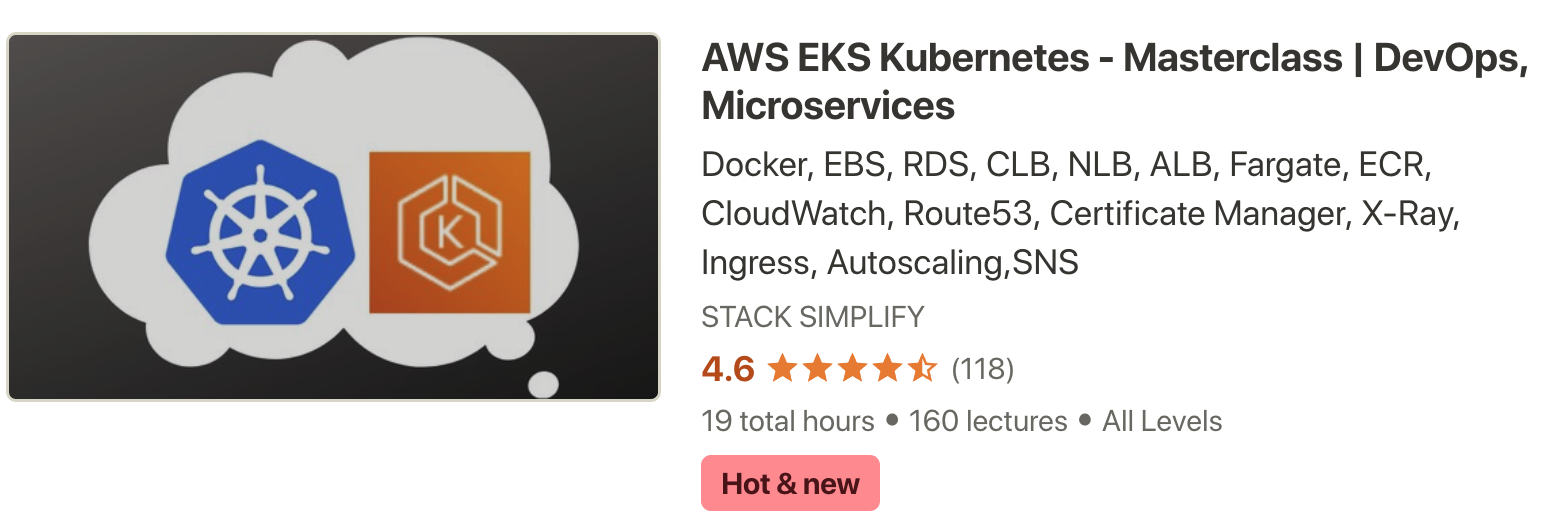Kubernetes - Update Deployments
Step-00: Introduction
- We can update deployments using two options
- Set Image
- Edit Deployment
Step-01: Updating Application version V1 to V2 using "Set Image" Option
Update Deployment
- Observation: Please Check the container name in
spec.container.name yaml output and make a note of it and
replace in kubectl set image command
# Get Container Name from current deployment
kubectl get deployment my-first-deployment -o yaml
# Update Deployment - SHOULD WORK NOW
kubectl set image deployment/<Deployment-Name> <Container-Name>=<Container-Image> --record=true
kubectl set image deployment/my-first-deployment kubenginx=stacksimplify/kubenginx:2.0.0 --record=true
Verify Rollout Status (Deployment Status)
- Observation: By default, rollout happens in a rolling update model, so no downtime.
# Verify Rollout Status
kubectl rollout status deployment/my-first-deployment
# Verify Deployment
kubectl get deploy
Describe Deployment
- Observation:
- Verify the Events and understand that Kubernetes by default do "Rolling Update" for new application releases.
- With that said, we will not have downtime for our application.
# Descibe Deployment
kubectl describe deployment my-first-deployment
Verify ReplicaSet
- Observation: New ReplicaSet will be created for new version
# Verify ReplicaSet
kubectl get rs
Verify Pods
- Observation: Pod template hash label of new replicaset should be present for PODs letting us
know these pods belong to new ReplicaSet.
# List Pods
kubectl get po
Verify Rollout History of a Deployment
- Observation: We have the rollout history, so we can switch back to older revisions using
revision history available to us.
# Check the Rollout History of a Deployment
kubectl rollout history deployment/<Deployment-Name>
kubectl rollout history deployment/my-first-deployment
Access the Application using Public IP
- We should see
Application Version:V2 whenever we access the application in browser
# Get NodePort
kubectl get svc
Observation: Make a note of port which starts with 3 (Example: 80:3xxxx/TCP). Capture the port 3xxxx and use it in application URL below.
# Get Public IP of Worker Nodes
kubectl get nodes -o wide
Observation: Make a note of "EXTERNAL-IP" if your Kubernetes cluster is setup on AWS EKS.
# Application URL
http://<worker-node-public-ip>:<Node-Port>
Step-02: Update the Application from V2 to V3 using "Edit Deployment" Option
Edit Deployment
# Edit Deployment
kubectl edit deployment/<Deployment-Name> --record=true
kubectl edit deployment/my-first-deployment --record=true
# Change From 2.0.0
spec:
containers:
- image: stacksimplify/kubenginx:2.0.0
# Change To 3.0.0
spec:
containers:
- image: stacksimplify/kubenginx:3.0.0
Verify Rollout Status
- Observation: Rollout happens in a rolling update model, so no downtime.
# Verify Rollout Status
kubectl rollout status deployment/my-first-deployment
Verify Replicasets
- Observation: We should see 3 ReplicaSets now, as we have updated our application to 3rd version 3.0.0
# Verify ReplicaSet and Pods
kubectl get rs
kubectl get po
Verify Rollout History
# Check the Rollout History of a Deployment
kubectl rollout history deployment/<Deployment-Name>
kubectl rollout history deployment/my-first-deployment
AWS EKS - Elastic Kubernetes Service - Masterclass

Access the Application using Public IP
- We should see
Application Version:V3 whenever we access the application in browser
# Get NodePort
kubectl get svc
Observation: Make a note of port which starts with 3 (Example: 80:3xxxx/TCP). Capture the port 3xxxx and use it in application URL below.
# Get Public IP of Worker Nodes
kubectl get nodes -o wide
Observation: Make a note of "EXTERNAL-IP" if your Kubernetes cluster is setup on AWS EKS.
# Application URL
http://<worker-node-public-ip>:<Node-Port>
